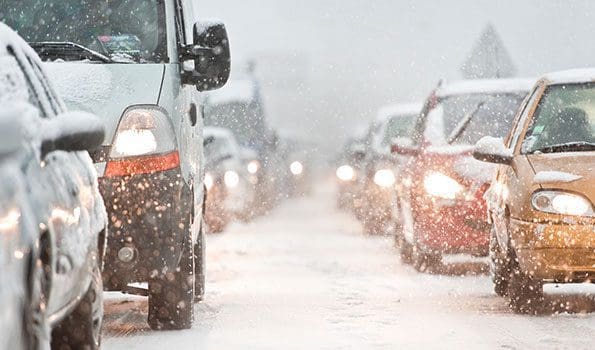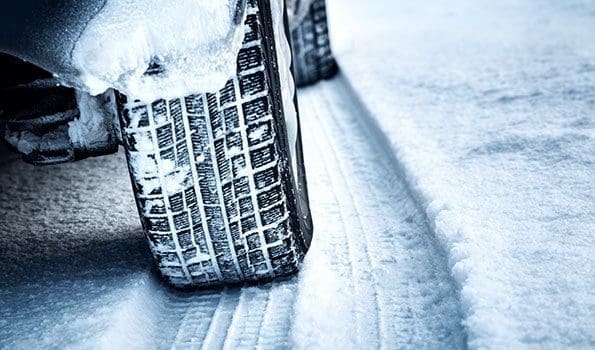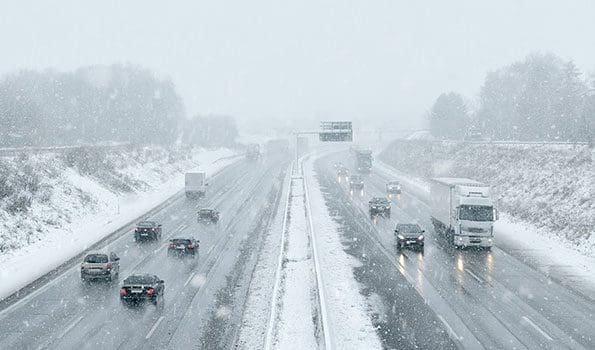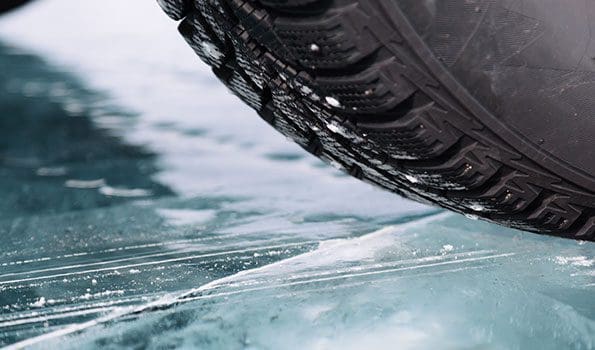- Car finance Car finance
- Motorbike finance Motorbike finance
- Van finance Van finance
- How it works How it works
- FAQs and guides FAQs and guides
- About us About us
- Home
- Blog
- Looking After Your Vehicle
- How to drive in the snow
How to drive in the snow
Updated: Thursday, 18 May 2023
How to drive in snow is a skill we should all learn. Sometimes we need to get places, and despite the snow we can’t just stay at home.
This guide should give you all the information you need to drive confidently and safely in the snow, helping you to get from A-B calmly.
How to drive in snow is a skill we should all learn. Sometimes we need to get places, and despite the snow we can’t just stay at home.
This guide should give you all the information you need to drive confidently and safely in the snow, helping you to get from A-B calmly.
What to do before driving in the snow
We should always get our vehicles regularly serviced, but if it’s snowing, it means it’s the winter, and in the winter, we should take extra care of our vehicles. Sometimes it may be that you need to look for a reliable car on finance to get ready for any winter driving you may be doing.
There are many ways that you can care for your car in the winter, including tyre pressure and topping up necessary fluids, but for driving in the snow particularly there are a few important things you need to do.
- Make sure that you have enough time to de-ice your windscreen properly so that you have full vision, as it’s illegal to drive without it. Try not to leave your car idle though, as leaving it unattended can make it a target for thieves, as well as potentially wasting fuel.
- Check that your wind screen wipers are in good working condition, this will make part of your winter car care, but it’s always good to check before heading off on a journey.
- Your lights should be in full working order, but also make sure they are clean so that they give off the best light possible.

What to do before driving in the snow
We should always get our vehicles regularly serviced, but if it’s snowing, it means it’s the winter, and in the winter, we should take extra care of our vehicles. Sometimes it may be that you need to look for a reliable car on finance to get ready for any winter driving you may be doing.
There are many ways that you can care for your car in the winter, including tyre pressure and topping up necessary fluids, but for driving in the snow particularly there are a few important things you need to do.
- Make sure that you have enough time to de-ice your windscreen properly so that you have full vision, as it’s illegal to drive without it. Try not to leave your car idle though, as leaving it unattended can make it a target for thieves, as well as potentially wasting fuel.
- Check that your wind screen wipers are in good working condition, this will make part of your winter car care, but it’s always good to check before heading off on a journey.
- Your lights should be in full working order, but also make sure they are clean so that they give off the best light possible.

We’d also advise to prepare yourself a car emergency kit especially for the winter and snowy conditions, which includes things from a torch to sunglasses and warm clothes and water. You can start by buying one with the basics in it from somewhere such as Halfords or Amazon.
Once you’ve made sure that your car is safe to drive, and you have your emergency kit should anything go wrong, then we would suggest preparing your route before you set off. Stick to the main roads where possible as these will be gritted and well lit, making them safer to drive on. Also make sure to read our tips below for driving in the snow before you set off.
We’d also advise to prepare yourself a car emergency kit especially for the winter and snowy conditions, which includes things from a torch to sunglasses and warm clothes and water. You can start by buying one with the basics in it from somewhere such as Halfords or Amazon.
Once you’ve made sure that your car is safe to drive, and you have your emergency kit should anything go wrong, then we would suggest preparing your route before you set off. Stick to the main roads where possible as these will be gritted and well lit, making them safer to drive on. Also make sure to read our tips below for driving in the snow before you set off.
Tips for driving in the snow
Driving in the snow can be a skill in itself, but here are a few tips to help you make driving in the snow safer for you and your family:
- Wear dry, secure and comfortable shoes
- Gently accelerate to avoid any quick movements that could likely cause a wheel spin.
- Try pulling off from second gear (unless you have an automatic), easing your foot off the clutch gently which can help to stop wheel spin. Some cars have a winter mode which does the same thing.
- Make sure you keep your distance from the vehicle in front of you and keep your speed slow.
- When you’re wanting to slow down use engine braking instead of using the breaks too much. But do tap on the break slightly to light up the brake lights to warn other drivers.
- When coming up to a bend make sure to brake before you turn the wheel. If the car does start to slide, do not worry, take your foot off the accelerator and just make sure that the wheels are in the direction you are wanting to go.
- If the snow gets too heavy and the visibility drops then put your fog lights on.
- When driving in heavy snow use dipped headlights to see, this makes sure that lights come on at the back of the vehicle too.
- Have sunglasses to hand as the sun can be low and glare directly off the snow in the daylight.
- Consider if the roads you are wanting to drive along will be gritted, and if not try and think of another accessible route.
- Keep your speed down and allow more time to stop and steer. Don’t drive anywhere in a rush in the snow.
A general winter car care tip is to keep your car clean. When there is lots of salt on the road your windscreen and lights can become dirty quickly, which can mean you can’t see clearly, or people can’t see you as clearly. Make sure your windscreen wash is always topped up throughout the winter months as well.
Tips for driving in the snow
Driving in the snow can be a skill in itself, but here are a few tips to help you make driving in the snow safer for you and your family:
- Wear dry, secure and comfortable shoes.
- Gently accelerate to avoid any quick movements that could likely cause a wheel spin.
- Try pulling off from second gear (unless you have an automatic), easing your foot off the clutch gently which can help to stop wheel spin. Some cars have a winter mode which does the same thing.
- Make sure you keep your distance from the vehicle in front of you and keep your speed slow
- When you’re wanting to slow down use engine braking instead of using the breaks too much. But do tap on the break slightly to light up the brake lights to warn other drivers.
- When coming up to a bend make sure to brake before you turn the wheel. If the car does start to slide, do not worry, take your foot off the accelerator and just make sure that the wheels are in the direction you are wanting to go.
- If the snow gets too heavy and the visibility drops then put your fog lights on.
- When driving in heavy snow use dipped headlights to see, this makes sure that lights come on at the back of the vehicle too.
- Have sunglasses to hand as the sun can be low and glare directly off the snow in the daylight.
- Consider if the roads you are wanting to drive along will be gritted, and if not try and think of another accessible route.
- Keep your speed down and allow more time to stop and steer. Don’t drive anywhere in a rush in the snow.
A general winter car care tip is to keep your car clean. When there is lots of salt on the road your windscreen and lights can become dirty quickly, which can mean you can’t see clearly, or people can’t see you as clearly. Make sure your windscreen wash is always topped up throughout the winter months as well.
How to drive downhill in the snow
If you need to drive downhill in the snow then take it slow and do it in a low gear. Try not to brake unless you need to avoid skidding, and keep as far away as possible to the person driving in front of you. That way if you need to brake you are giving yourself enough room to allow for slipping.
How to drive uphill in the snow
When driving uphill in the snow you must leave plenty of room between you and the vehicle in front, in fact when it’s snowing it’s advised to leave up to 10 times more space than you usually would. Maintain a constant speed and travel uphill without needing to change gear. Slowing down or braking could cause you to need to accelerate too much to get back up to speed which could be dangerous on the snow and ice.

How to drive downhill in the snow
If you need to drive downhill in the snow then take it slow and do it in a low gear. Try not to brake unless you need to avoid skidding, and keep as far away as possible to the person driving in front of you. That way if you need to brake you are giving yourself enough room to allow for slipping.
How to drive uphill in the snow
When driving uphill in the snow you must leave plenty of room between you and the vehicle in front, in fact when it’s snowing it’s advised to leave up to 10 times more space than you usually would. Maintain a constant speed and travel uphill without needing to change gear. Slowing down or braking could cause you to need to accelerate too much to get back up to speed which could be dangerous on the snow and ice.

What gear should you drive in?
Pulling off from a standstill in the snow should be done in second gear, gently pulling your foot off from the clutch. As soon as you are moving you should move up to a higher gear. Although acceleration should be done smoothly and without revving too much.
When driving in the snow you should stick to lower gears when going uphill and downhill as this gives you more control of your vehicle. Any gear changing should be done smoothly and slowly to reduce the risk of skidding.
What gear should you drive in?
Pulling off from a standstill in the snow should be done in second gear, gently pulling your foot off from the clutch. As soon as you are moving you should move up to a higher gear. Although acceleration should be done smoothly and without revving too much.
When driving in the snow you should stick to lower gears when going uphill and downhill as this gives you more control of your vehicle. Any gear changing should be done smoothly and slowly to reduce the risk of skidding.
Stopping distance in snow
Driving in ice and snow can increase your stopping distance to 10 times longer than usual. This means the stopping distance when driving at 30mph in the snow has increased from the usual 14 metres or 3.5 average cars to 140 metres, which is 35 average cars in length (brake.org). This just highlights the strong need to stay slow and keep your distance when it’s snowing.
Time gap between cars on an icy road
As the stopping distance suggested has increased by 10 times in the snow, then so does the time between cars on an icy road. You must leave a 20 second gap when the road is icy or covered in snow to be able to brake slowly and carefully without skidding.

Stopping distance in snow
Driving in ice and snow can increase your stopping distance to 10 times longer than usual. This means the stopping distance when driving at 30mph in the snow has increased from the usual 14 metres or 3.5 average cars to 140 metres, which is 35 average cars in length (brake.org). This just highlights the strong need to stay slow and keep your distance when it’s snowing.
Time gap between cars on an icy road
As the stopping distance suggested has increased by 10 times in the snow, then so does the time between cars on an icy road. You must leave a 20 second gap when the road is icy or covered in snow to be able to brake slowly and carefully without skidding.

Tyre pressure for snow
No matter what conditions you are driving in you should never ignore car warning lights on your dashboard, even more so when it’s tyre pressure in the snow!
Tyre pressure is particularly important in the winter, as your tyres are what will keep you safe on the road. Making sure they are in good condition, including at the right pressure is extremely important in the snow, and if you’ve ever heard that reducing tyre pressure can help in the snow then completely ignore it as this is a myth.
Your tyre pressure should remain the same throughout the year, but it’s more important to keep on top of it in the snow. This is mainly because the cold can cause your tyres to lose pressure, every time the temperature drops by 10°C your tyres can lose between 1-2PSI. During the winter months, check your tyre pressure at least once a month to make sure you are driving on the correct tyre pressure. We’d also suggest that you check them right before you head out into the snow.
Do I need winter tyres?
You do not need winter tyres, as they are a personal choice and not a legal requirement. However, they could be a great idea if you drive a lot in the ice and snow, or just generally in lower temperatures. Winter tyres are a safer option, and work best below 7°C and can help to decrease your stopping distance by a couple of metres. They also provide more traction and grip as they have narrow cuts, also called sipes, built into the tread to help with this.
They also are another expense that you may not have considered and therefore may not be exactly right for you. Cheaper alternatives include snow socks and snow chains, but these can only be used in the snow and not just generally in the winter. Snow socks are as they suggest, fabric that can be put over tyres to offer a stronger grip in the snow. Snow chains offer more grip but are more difficult to put onto tyres but is another alternative to consider.
Tyre pressure for snow
No matter what conditions you are driving in you should never ignore car warning lights on your dashboard, even more so when it’s tyre pressure in the snow!
Tyre pressure is particularly important in the winter, as your tyres are what will keep you safe on the road. Making sure they are in good condition, including at the right pressure is extremely important in the snow, and if you’ve ever heard that reducing tyre pressure can help in the snow then completely ignore it as this is a myth.
Your tyre pressure should remain the same throughout the year, but it’s more important to keep on top of it in the snow. This is mainly because the cold can cause your tyres to lose pressure, every time the temperature drops by 10°C your tyres can lose between 1-2PSI. During the winter months, check your tyre pressure at least once a month to make sure you are driving on the correct tyre pressure. We’d also suggest that you check them right before you head out into the snow.
Do I need winter tyres?
You do not need winter tyres, as they are a personal choice and not a legal requirement. However, they could be a great idea if you drive a lot in the ice and snow, or just generally in lower temperatures. Winter tyres are a safer option, and work best below 7°C and can help to decrease your stopping distance by a couple of metres. They also provide more traction and grip as they have narrow cuts, also called sipes, built into the tread to help with this.
They also are another expense that you may not have considered and therefore may not be exactly right for you. Cheaper alternatives include snow socks and snow chains, but these can only be used in the snow and not just generally in the winter. Snow socks are as they suggest, fabric that can be put over tyres to offer a stronger grip in the snow. Snow chains offer more grip but are more difficult to put onto tyres but is another alternative to consider.
How to drive on black ice
Black ice is a thin coating or a glaze of ice on any surface, but in this case we are talking about the road. Although it’s completely clear, it’s called black ice as you can see the black road below.
If you find yourself asking ‘How to drive on ice’ then keep reading. You must keep your steering straight and keep at the same speed. You must not hit the brakes or make any sudden movements. If you need to stop then you must try and use the gears to brake to make sure you stay safe.

How to drive on black ice
Black ice is a thin coating or a glaze of ice on any surface, but in this case we are talking about the road. Although it’s completely clear, it’s called black ice as you can see the black road below.
If you find yourself asking ‘How to drive on ice’ then keep reading. You must keep your steering straight and keep at the same speed. You must not hit the brakes or make any sudden movements. If you need to stop then you must try and use the gears to brake to make sure you stay safe.

How to drive an automatic in the snow
Driving an automatic in snow is not too different to driving a manual in the snow. The only difference being that you can’t use your gears to brake, which can make it a little more dangerous. Stay safe driving an automatic in the snow by making sure every action you make is gentle, whether that be accelerating, braking, or steering. You should also make sure that you have finished braking before steering to turn a corner.
Automatic cars may also have a snow mode, use this if your car has this! It keeps your wheels straight and counterbalances anything that the drive may to do increase the chances of skidding.
FAQS when driving in the snow
Rear-wheel drive in snow
Rear-wheel drive cars are not good at driving in the snow. Ideally you would want a front-wheel or a 4×4 to tackle driving in the snow. The reason rear-wheel drives aren’t very good in the snow is because the driving wheels are in the lighter part of the car, meaning that the rear wheels have less traction to the road and can cause the car to spin. A way around this could be to put a heavy load in the back of the car to make sure the rear tyres are touching the ground more firmly, having more traction.
How much snow is too much to drive in?
This completely depends on your confidence levels and what your car is equipped with. If you have snow tyres fitted then you can drive in the snow, up to 4 inches, however if you are more of a cautious driver then maybe finding alternative transportation in any snow is wise.
How to drive in the snow for the first time
The 2 things that you should do are stay calm and don’t make any quick decisions when it comes to braking or accelerating. Here are a few other things you should do before setting off on your first snow trip:
- Warm-up the car
- Keep extra distance from other vehicles
- If you skid, then steer into it
- Make sure your car is clear of ice
- Drive at a slower speed than usual
Make sure you have a read of this guide before taking off for the first time in the snow.
Should I turn traction control off in snow?
Traction control is a useful feature in a car most of the time, but not in the snow and it should be turned off if you are planning to drive in the snow. Traction control works by ensuring that each wheel always has grip or traction on the road. It does this by applying the brakes to the individual wheel or cutting the engines power to the wheel that’s losing grip. Braking or slowing down too quickly in the snow can cause accidents which is why it’s a good idea to turn traction control off when driving in the snow.
How to drive a FWD car in snow
Front wheel drive (FWD) cars are better than rear-wheel drive cars in the snow, but they should still be driven with caution. Fit snow tyres or socks should you want to, but if not make sure to think ahead of each movement you want to make in the car. That way you remove the need to move quickly, and this should help you not to skid.
How to drive an AWD car in snow
An all-wheel drive (AWD) car in the snow is better to drive than either a front wheel or rear wheel drive. All wheels have power to them and this can be helpful in the snow, because all wheels have traction it can be easier to pull off in an AWD. However the traction on the wheels can only help so much, and if you are speeding on ice or braking, then the same rules apply as if you were driving any other type of vehicle. This is to make thoughtful, slow, and steady movements whilst driving in the snow.
How to drive a 4x4 in snow
A 4×4 car is also known as an all-wheel drive which can be better to drive in the snow as all wheels have power to them and therefore traction. However, this is only the case if you also drive cautiously by thinking ahead of what movements you want to make, and not accelerating or braking too harshly.
How to drive an automatic in the snow
Driving an automatic in snow is not too different to driving a manual in the snow. The only difference being that you can’t use your gears to brake, which can make it a little more dangerous. Stay safe driving an automatic in the snow by making sure every action you make is gentle, whether that be accelerating, braking, or steering. You should also make sure that you have finished braking before steering to turn a corner.
Automatic cars may also have a snow mode, use this if your car has this! It keeps your wheels straight and counterbalances anything that the drive may to do increase the chances of skidding.
FAQS when driving in the snow
Rear-wheel drive in snow
Rear-wheel drive cars are not good at driving in the snow. Ideally you would want a front-wheel or a 4×4 to tackle driving in the snow. The reason rear-wheel drives aren’t very good in the snow is because the driving wheels are in the lighter part of the car, meaning that the rear wheels have less traction to the road and can cause the car to spin. A way around this could be to put a heavy load in the back of the car to make sure the rear tyres are touching the ground more firmly, having more traction.
How much snow is too much to drive in?
This completely depends on your confidence levels and what your car is equipped with. If you have snow tyres fitted then you can drive in the snow, up to 4 inches, however if you are more of a cautious driver then maybe finding alternative transportation in any snow is wise.
How to drive in the snow for the first time
The 2 things that you should do are stay calm and don’t make any quick decisions when it comes to braking or accelerating. Here are a few other things you should do before setting off on your first snow trip:
- Warm-up the car
- Keep extra distance from other vehicles
- If you skid, then steer into it
- Make sure your car is clear of ice
- Drive at a slower speed than usual
Make sure you have a read of this guide before taking off for the first time in the snow.
Should I turn traction control off in snow?
Traction control is a useful feature in a car most of the time, but not in the snow and it should be turned off if you are planning to drive in the snow. Traction control works by ensuring that each wheel always has grip or traction on the road. It does this by applying the brakes to the individual wheel or cutting the engines power to the wheel that’s losing grip. Braking or slowing down too quickly in the snow can cause accidents which is why it’s a good idea to turn traction control off when driving in the snow.
How to drive a FWD car in snow
Front wheel drive (FWD) cars are better than rear-wheel drive cars in the snow, but they should still be driven with caution. Fit snow tyres or socks should you want to, but if not make sure to think ahead of each movement you want to make in the car. That way you remove the need to move quickly, and this should help you not to skid.
How to drive an AWD car in snow
An all-wheel drive (AWD) car in the snow is better to drive than either a front wheel or rear wheel drive. All wheels have power to them and this can be helpful in the snow, because all wheels have traction it can be easier to pull off in an AWD. However the traction on the wheels can only help so much, and if you are speeding on ice or braking, then the same rules apply as if you were driving any other type of vehicle. This is to make thoughtful, slow, and steady movements whilst driving in the snow.
How to drive a 4x4 in snow
A 4×4 car is also known as an all-wheel drive which can be better to drive in the snow as all wheels have power to them and therefore traction. However, this is only the case if you also drive cautiously by thinking ahead of what movements you want to make, and not accelerating or braking too harshly.
Bringing you tips on buying and maintaining your vehicle to make life on the road less stressful.
More from Moneybarn...
For a better road ahead
Moneybarn is a member of the Finance and Leasing Association, the official trade organisation of the motor finance industry. The FLA promotes best practice in the motor finance industry for lending and leasing to consumers and businesses.
Moneybarn is the trading style of Moneybarn No. 1 Limited, a company registered in England and Wales with company number 04496573, and Moneybarn Limited, a company registered in England and Wales with company number 02766324. The registered address for these companies is: Athena House, Bedford Road, Petersfield, Hampshire, GU32 3LJ.
Moneybarn’s VAT registration number is 180 5559 52.
Moneybarn Limited is authorised and regulated by the Financial Conduct Authority (Financial Services reference No. 702781)
Moneybarn No. 1 Limited is authorised and regulated by the Financial Conduct Authority (Financial Services reference No. 702780)




